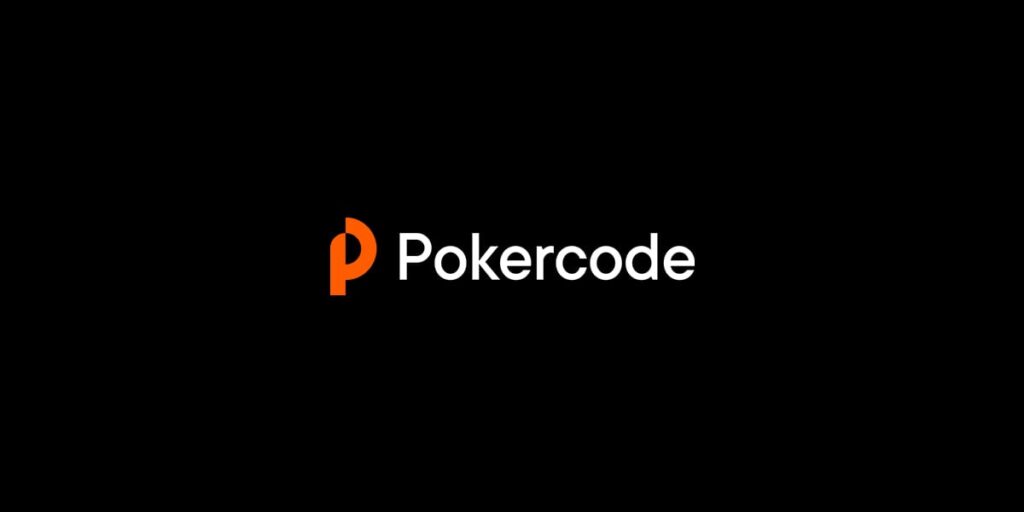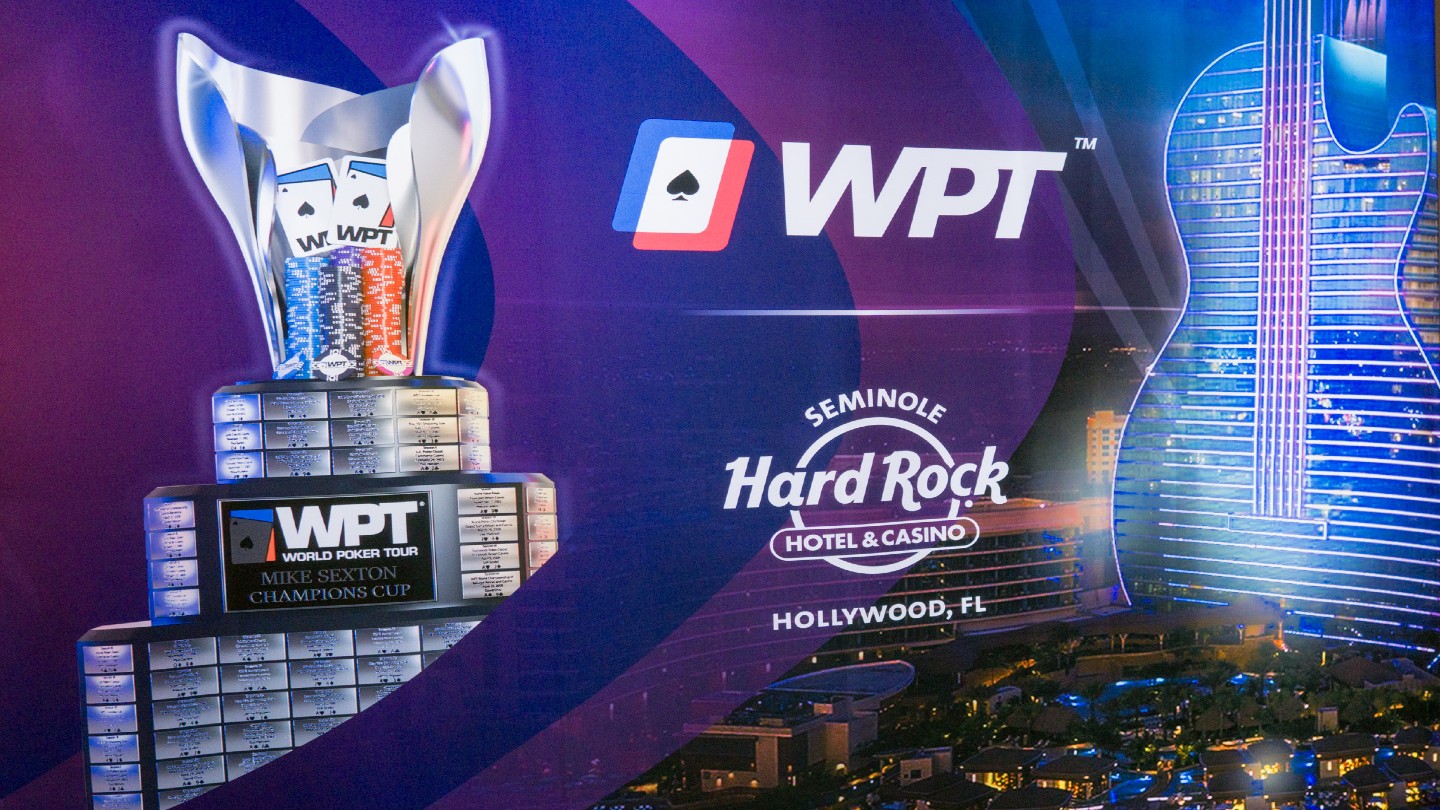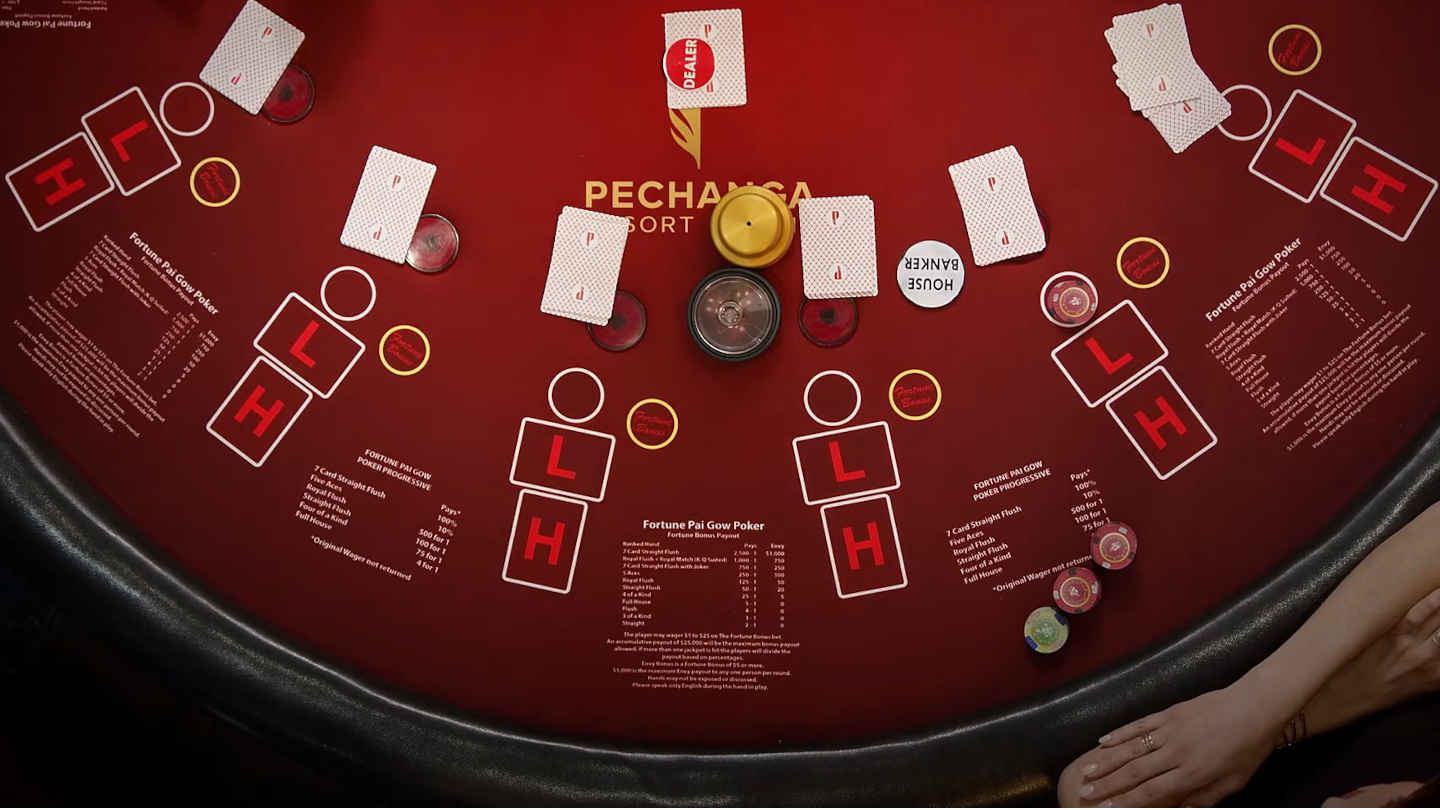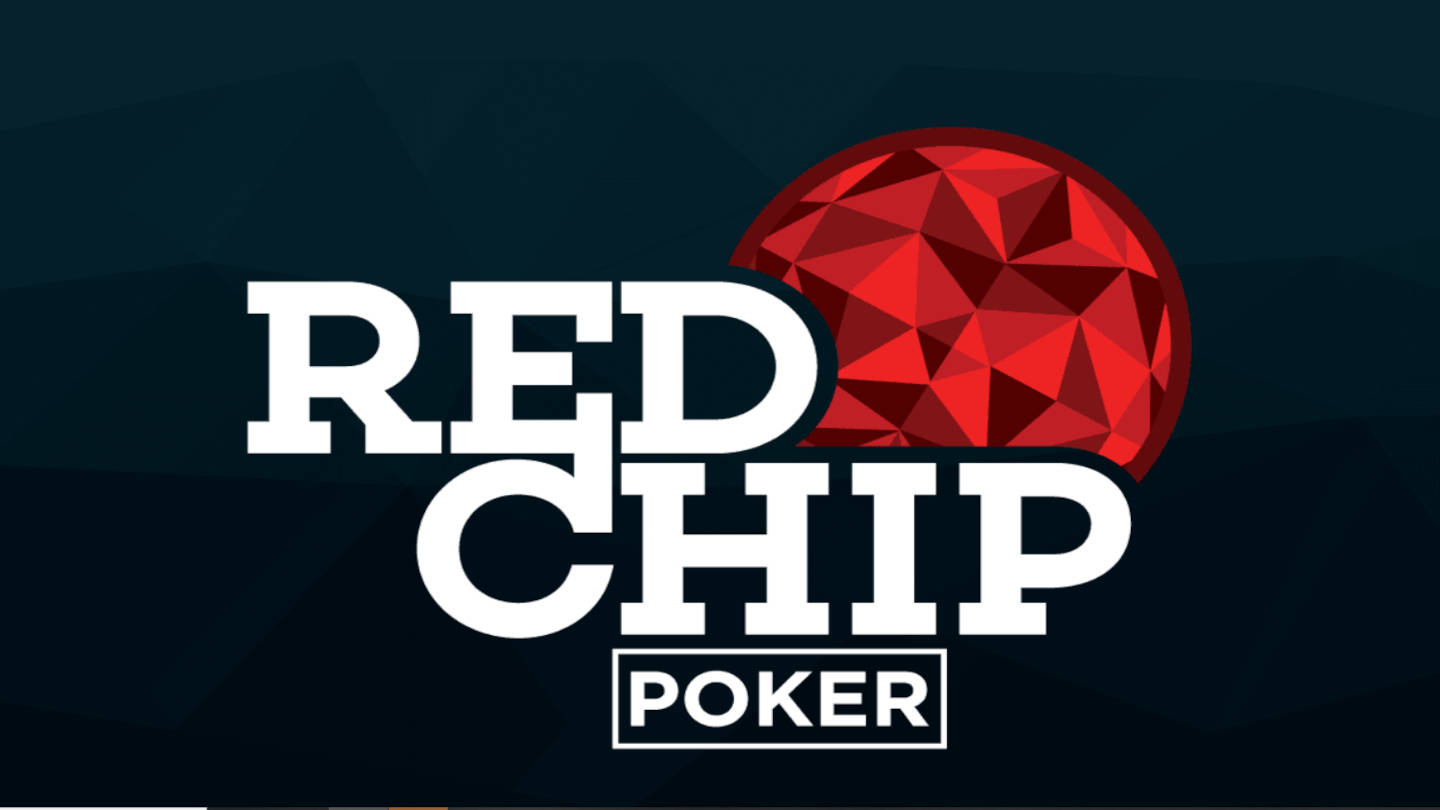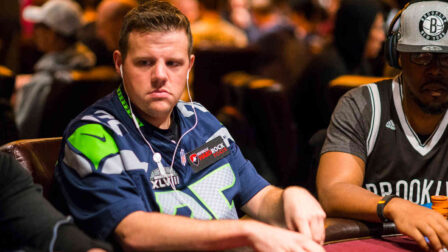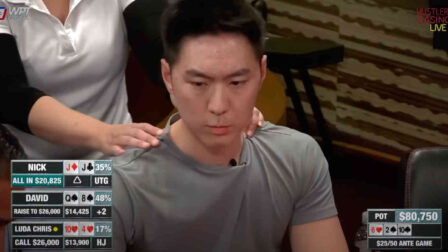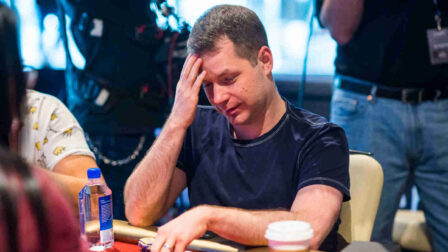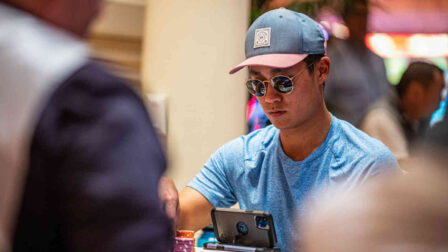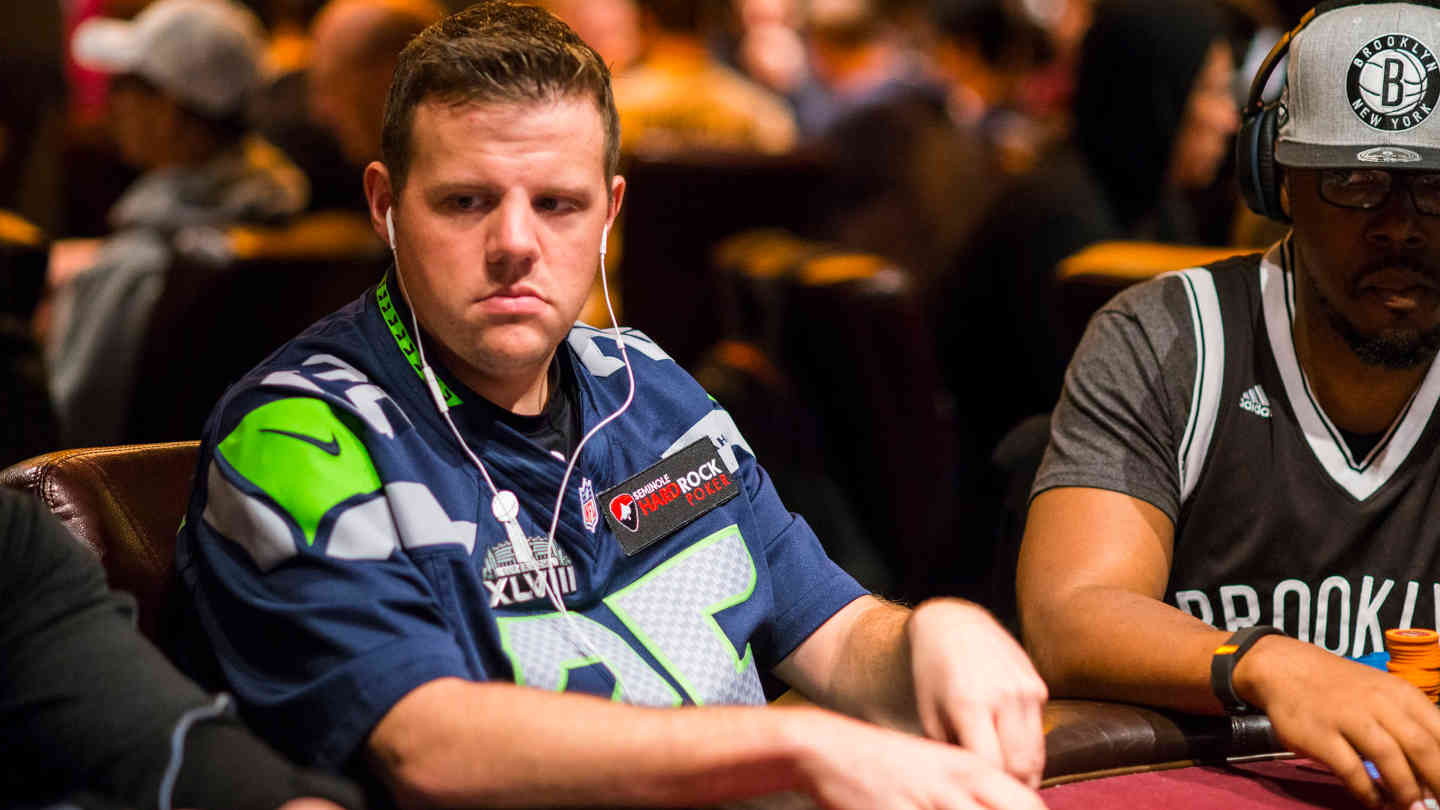Playing as Preflop Aggressor in Position – Expert Tips by Fedor Holz
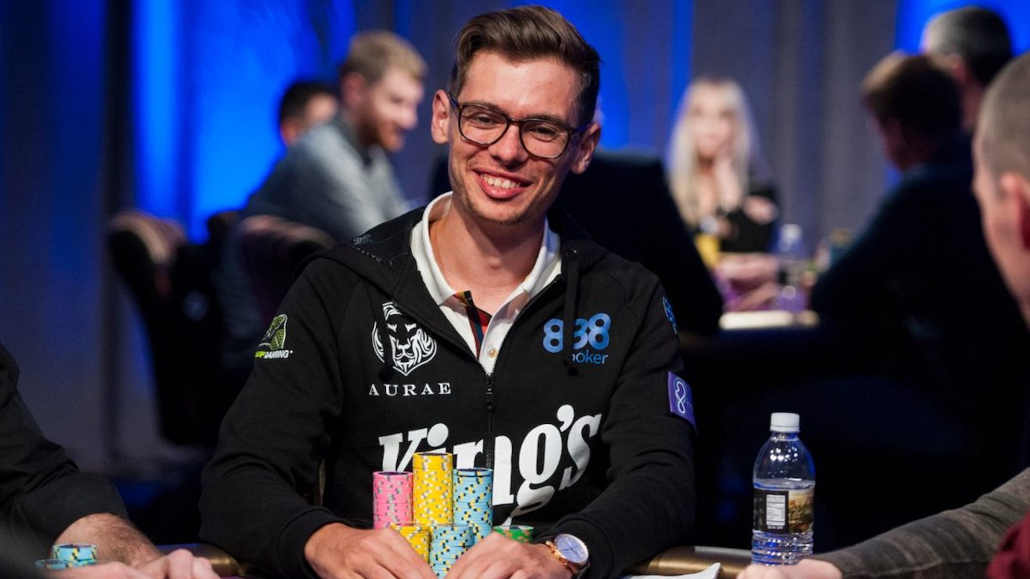
3 minutes
Last Updated: November 5, 2023
If you want to become a top player in your games, make sure to learn from the best and check pokercode.com
…
In today’s article, I’ll be discussing a common scenario that every player will find themselves in many times during any tournament: being a preflop aggressor and having a position on your opponent.
So, you open the hand and get called by a player out of position, i.e., by one of the blinds.
This is a fairly extensive topic, and it’s impossible to cover all the different positions in a single article. Thus, for this one, we’ll focus on two positions and look into opening ranges from the middle position and from the button (playing 60 big blinds deep).
These two can serve as a cornerstone of your strategy, and if you master these, you should have no problems finding solutions in the middle.
Playing as an Aggressor from the MP
Let’s start with the middle position, where you open and get called by the big blind. The flop comes K♠10♦4♣, and the big blind checks to you.
On this particular flop, you, as an MP opener, will have a significant equity advantage and a much higher nut ratio than the defending player.
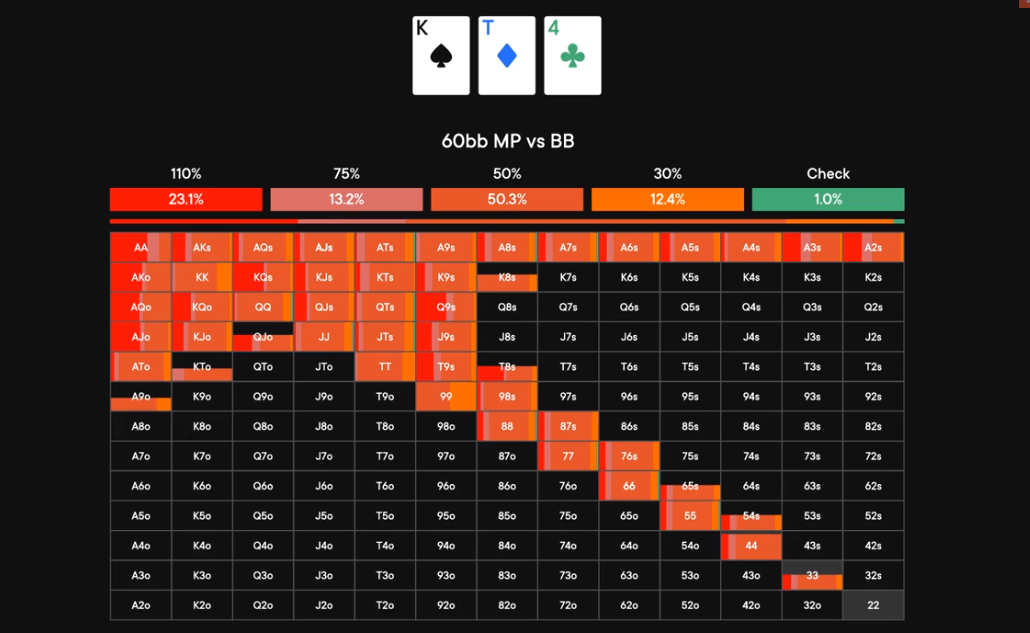
As you can see on the chart above, your opening range contains quite a few face cards, while the big blind’s defending range doesn’t, which is enough to put you well ahead on this flop texture.
So, armed with this knowledge, it’s time to look at the betting frequencies and the best ways to capitalize on this advantage.
You have a wide range of possibilities when it comes to picking your bet sizes in this spot. The most frequent sizing here will be 50%, but you can go for bigger bets as well, and at a quite high frequency at that.
I would suggest keeping things simple and picking two c-bet sizings – one “normal” or smaller, i.e., 50%, and another on the larger side, i.e., 75% or 110%.
The most important thing to keep in mind is that this is the type of spot that we’ll bet pretty much 100% of the time, and you’ll want to use your big sizing with a fairly big portion of your entire range.
By betting out here, we build the pot, which we have every incentive to do, having such a significant range advantage, and also deny equity and protect the weaker part of our range.
Playing from the Button
Now, we move on to the second scenario, where we’re opening from the button and playing a much wider range. Because of this, there are some significant changes to consider.
First of all, hand equities run much closer in these situations:
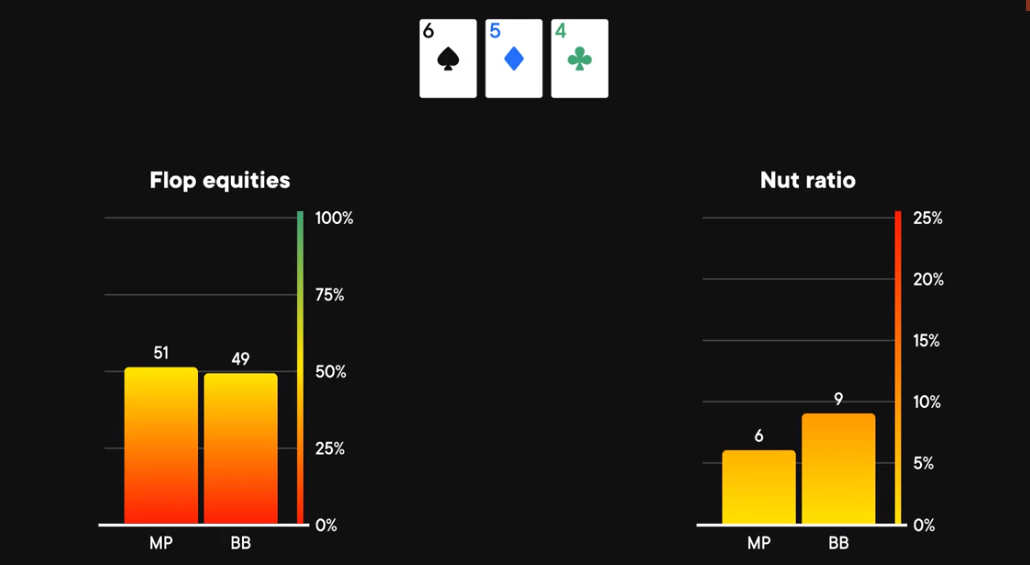
We need to adjust our c-betting strategy accordingly. We still have more than enough equity to bet with high frequency, but we’re not that much ahead to be able to utilize large bet sizes.
For the most part, our continuation bets should be around 30% of the pot. While there are a few percentage points reserved for other actions, if you want to simplify things, you can just bet 30% of the pot 100% of the time in these types of scenarios.
Paying Attention to Board Textures
Both previous examples examine situations where the board is favorable to the preflop aggressor, but this isn’t always the case in poker. Often, the board texture will favor the big blind player.
For example, if we look at the flop of 4♣5♦6♠, this is a situation where the defending player will have a significant nut advantage over the MP opener, as their range contains many more two-pair hands, sets, and straights.
In these spots, you’ll want to check back over 80% of the time and c-bet only around 20%. It is also interesting to note that here, the hands that you’ll want to bet are really strong ones (sets and overpairs) and some really weak hands that don’t connect with the board at all.
Playing from the button, equities still run pretty close, but the nut advantage once again shifts to us as the preflop aggressor. This allows us to continuation bet at a higher frequency and on the larger side with about 30% of their range.
When choosing bluffing hands in these spots, you should go for hands that have almost no equity on the flop but have the potential to turn into strong hands by the river. So, pick hands with a backdoor flush draw or stronger straight options.



